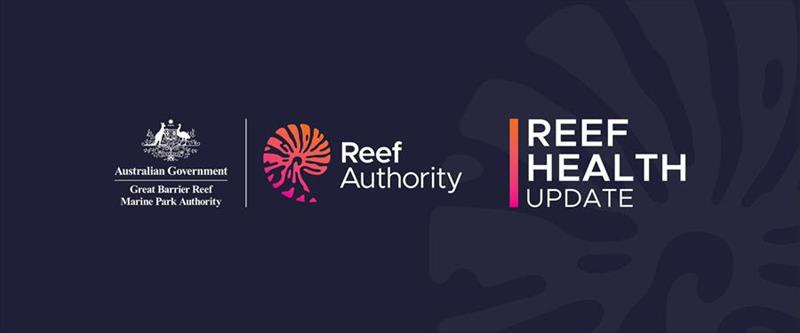
Great Barrier Reef health update - August 2024
by GBRMPA 15 Aug 2024 02:58 UTC
August 2024

Reef health update © GBRMPA
This Reef Health update is based on data collected during July, 2024.
July 2024 was the second warmest on record for global sea surface temperatures (SSTs). In the Marine Park, SSTs were 0.8 - 1.2 degreesC above the long-term monthly average for July.
The El Niño weather pattern's neutral conditions are expected to continue into Spring and the Bureau of Meteorology predict there is a 50 per cent chance of La Niña conditions developing before the end of the year.
Last week the Australian Institute of Marine Science (AIMS) released its Annual Summary Report of the Great Barrier Reef Coral Reef Condition 2023-24.
In some welcoming news, the 2023-34 Summary Report found that coral cover on the Great Barrier Reef is at regional highs in two of the three regions and has increased in all three regions.
It's important to note that most of the surveys conducted as part of this Report were completed before the 2024 summer mass coral bleaching event.
Further surveys and monitoring over the next 12 months will help us to understand how much coral on the Reef has recovered from the 2024 summer bleaching event. The full impacts the 2024 mass coral bleaching event has had on the long-term trend on coral cover will not be known until the Australian Institute of Marine Science releases its next annual summary report of coral reef condition in 2025.
The Reef Authority is continuing work with the Australian Institute of Marine Science and James Cook University on the coral bleaching impact framework. The categorisation of this year's marine heat wave and mass bleaching event will be made available later this year.
Reef health summary for July
In-water surveys conducted in July found some coral mortality on a limited number of Reefs in all three regions of the Marine Park. Coral recovery was also observed across the Marine Park.
Survey results show that very little bleached coral remains on the observed reefs, as current sea surface temperatures are below the threshold that typically causes bleaching. This indicates that we can expect only minimal additional mortality beyond what has already been recorded from the 2024 mass coral bleaching event.
Rainfall
Average rainfall was observed in July in the northern Marine Park catchment areas.
Areas north of Cairns experienced above average rainfall, however no elevated sediment loads in the Marine Park were reported.
Reef health
A total of 278 in-water surveys were conducted in the Marine Park in July, of which 178 were Reef Health Impact Surveys (RHIS), a quantifiable survey method used mostly by the Reef Authority, Queensland Parks and Wildlife Service and researchers as well as trained tourism operators.
Some coral mortality was recorded in reefs off Cape Melville, South of Cairns and in the Capricorn Bunker group where corals were exposed to high levels of heat stress over the summer. Very few bleaching observations were reported.
A high-density crown-of-thorns starfish (CoTS) outbreak continues at some reefs in the offshore southern region (Swain Reefs) and isolated outbreaks remain on a few reefs offshore Cairns in the central region.
Crown-of-thorns starfish control program operations resumed in the northern region to address a primary CoTS outbreak near Lizard Island and offshore Port Douglas. This area is of particular concern as primary outbreaks in this region have previously precipitated waves of secondary outbreaks on downstream reefs and regions further south.
Reef management
We rely heavily on key partners including tourism operators and Traditional Owners to conduct in-water surveys which improve our understanding of the variability of coral responses to heat stress and help to quantity any mortality that has occurred post summer.
The Reef Authority collaborates with science and management institutions to maintain a contemporary understanding of Reef health and the impacts of climate change on the World Heritage Area.
The Australian Institute of Marine Science, the Bureau of Meteorology, CSIRO, and other research institutions continue to deliver monitoring and research that documents the long-term trend of Reef conditions and climate patterns. This includes multiple monitoring programs under the Reef 2050 Integrated Monitoring and Reporting Program.
We've never had as much information as we do now on the health of the reef. But it's important to remember that the Great Barrier Reef is the largest living structure on earth - and any reporting only takes up to a point in time.
We have seen the Reef bounce back before from severe impacts such as the consecutive bleaching events in 2016 and 2017. This was followed by widespread coral recovery between 2017 and 2022.
Our management actions are geared towards building and supporting Reef resilience, including enforcing compliance with the Reef's zoning plan and ensuring people are enjoying the Reef in a responsible way.
More information here